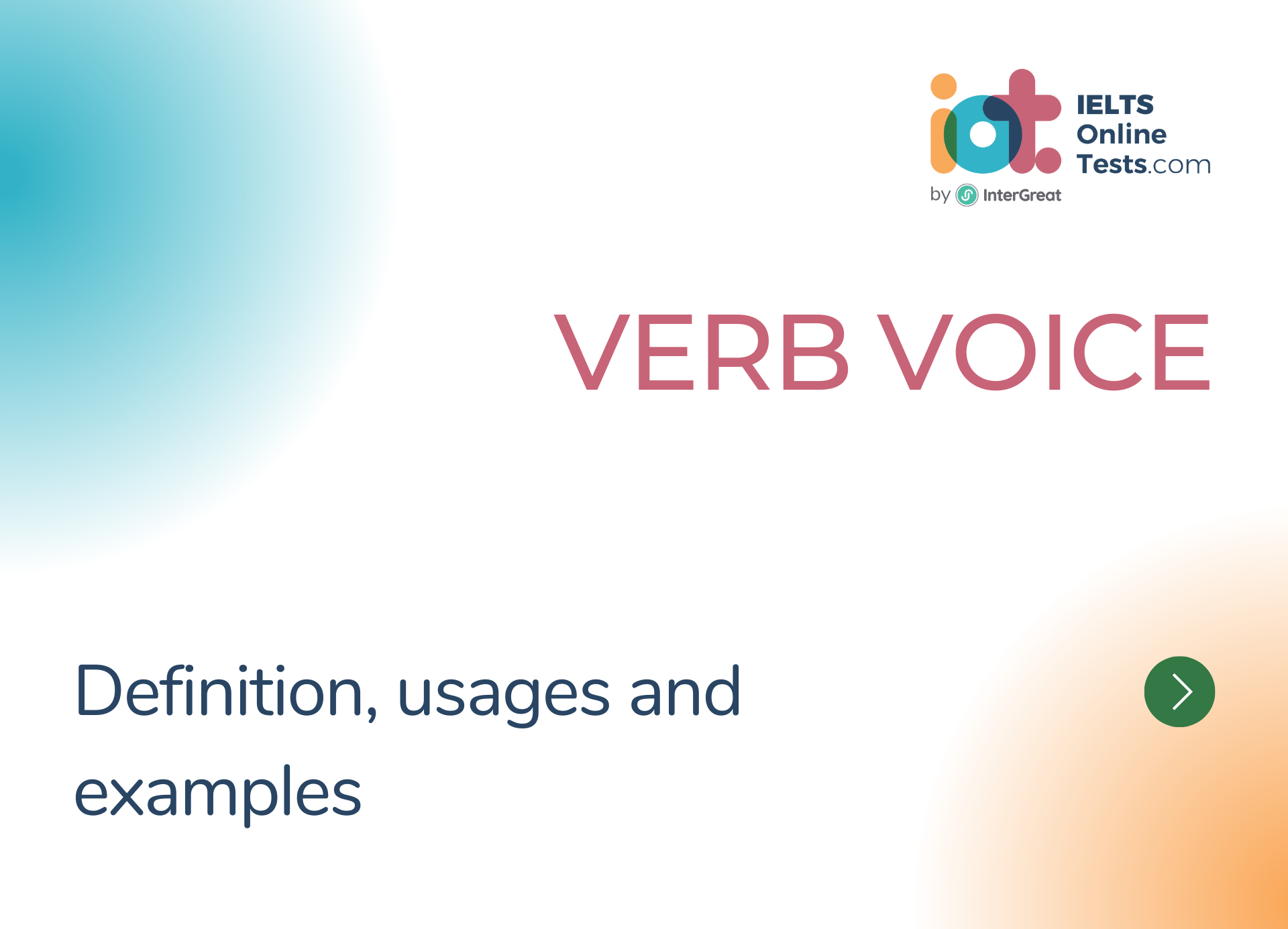Verb voice refers to the form or structure of a verb that indicates whether the subject of a sentence is performing the action (active voice) or receiving the action (passive voice). Understanding verb voice helps convey information about the focus and perspective of the sentence.
| ACTIVE VOICE | PASSIVE VOICE |
| Active voice is a grammatical construction where the subject of a sentence performs the action expressed by the verb. It is the most common and straightforward way of presenting information. | Passive voice is a grammatical construction in which the subject of a sentence undergoes the action expressed by the verb, rather than performing the action itself. In passive voice, the emphasis is on the receiver of the action rather than the doer. |
Characteristics of Active Voice: - The subject of the sentence is the doer or performer of the action.
- Active voice sentences typically follow the subject-verb-object (SVO) word order.
- Active voice sentences are generally more concise, direct, and easier to understand.
Examples of Active Voice: - "She wrote a novel."
- "The cat chased the mouse."
- "They are building a house."
- "He sings beautifully."
- "We ate dinner together."
Advantages of Active Voice: - Clarity: Active voice clearly indicates who or what is performing the action, making the sentence easier to understand.
- Conciseness: Active voice often results in shorter, more concise sentences.
- Directness: Active voice provides a straightforward and engaging way to convey information.
- Active voice is commonly used in various forms of writing, such as narratives, instructions, news articles, and everyday conversation.
Importance of Active Voice: - Active voice promotes clarity and helps avoid ambiguity in communication.
- Active voice is useful when emphasizing the doer of the action, especially in situations where responsibility or accountability is relevant.
Active to Passive Voice Conversion: - To convert a sentence from active to passive voice, the object of the active sentence becomes the subject in the passive sentence.
- The verb is changed to a passive form by using a form of "to be" and the past participle of the main verb.
- Example:
- Active: "They built the house."
- Passive: "The house was built by them."
| Structure of Passive Voice: - Passive voice sentences typically follow the object-verb-subject (OVS) word order.
- The verb is formed by using a form of the auxiliary verb "to be" (such as "is," "was," "has been") followed by the past participle of the main verb.
- Example: "The book was written by the author."
Characteristics of Passive Voice: - The subject of the sentence receives or experiences the action performed by someone or something else.
- The doer or agent of the action may be mentioned using the preposition "by," but it is often omitted or unknown.
- Passive voice is commonly used in formal writing, scientific research papers, and when the focus is on the action rather than the doer.
Examples of Passive Voice: - "The report was prepared by the team."
- "The window was broken by a stray baseball."
- "The cake has been baked."
- "The flowers were being watered by the gardener."
- "The decision will be made by the committee."
Reasons for Using Passive Voice: - Focus on the receiver: Passive voice emphasizes the object or receiver of the action.
- De-emphasizing the doer: Sometimes the doer of the action is unknown, irrelevant, or intentionally left undisclosed.
- Formality: Passive voice is often preferred in formal or academic writing as it lends a more objective tone.
Drawbacks of Passive Voice: - Lack of clarity: Passive voice can sometimes obscure the doer or create ambiguity about who performed the action.
- Wordiness: Passive voice sentences tend to be longer and can sound more convoluted than active voice sentences.
- Reduced impact: Passive voice can make writing seem less direct or engaging.
Passive to Active Voice Conversion: - To convert a sentence from passive to active voice, the subject of the passive sentence becomes the doer or subject in the active sentence.
- The verb is changed to an active form, and the receiver of the action (formerly the subject in the passive sentence) becomes the object in the active sentence.
- Example:
- Passive: "The cake was baked by her."
- Active: "She baked the cake."
|
Understanding verb voice allows for effective communication and precise expression of the relationship between the subject and the action in a sentence. Active and passive voices offer different perspectives and emphasis, and knowing when to use each can enhance the clarity and impact of your writing or speech.





